The best Ironman World Championship moments ever
We count down our pick of the top highlights from the Ironman World Championship since its inception in 1978. Get ready to relive some sporting greatness…

With its history stretching back almost as far as triathlon itself, the Ironman World Championship has become an institution among triathletes and endurance athletes. Here we count down our top highlights from the race’s history…
43. The Ironman is born
US Navy Commander John Collins decides to put an end to a debate about who was the fittest – swimmers, cyclists or runners – by combining Hawaii’s three biggest endurance races. So the Waikiki Roughwater Swim (2.4 miles), the Around-Oahu Cycle Race (115 miles) and the Honolulu Marathon (26.2 miles) became the Hawaiian Ironman.
42. The first Ironman
The Hawaii Ironman triathlon was first staged on 18 February 1978 in Honolulu. A field of 15 athletes started, with 12 crossing the finish line. Each were rewarded with a handmade trophy.
41. Gordon Haller is the first Ironman champion
In this gruelling first year, and at a time without many of the technological enhancements of today, American triathlete Gordon Haller became the first Ironman, with a time of 11:46:58.
40. Lyn Lemaire is the first woman to win the Ironman

In 1979, America’s Lyn Lemaire became the first woman to win the endurance event in a time of 12:55:38. She placed fifth in a field of 15.
39. Wide World of Sports covers the Ironman
US broadcaster ABC brought the Ironman into the living rooms of Americans in 1980. Future multiple champion Dave Scott won, aged 26, with Robin Beck taking the women’s title.
38. The Ironman moves to Kailua-Kona
With Collins transferred to Washington by the US Navy in 1981, Valerie Silk took the race in a new direction, moving it from Honolulu to a quieter location, Kailua-Kona, on Hawaii’s Big Island. John Howard took the title.
37. Scott Tinley first uses aerobars
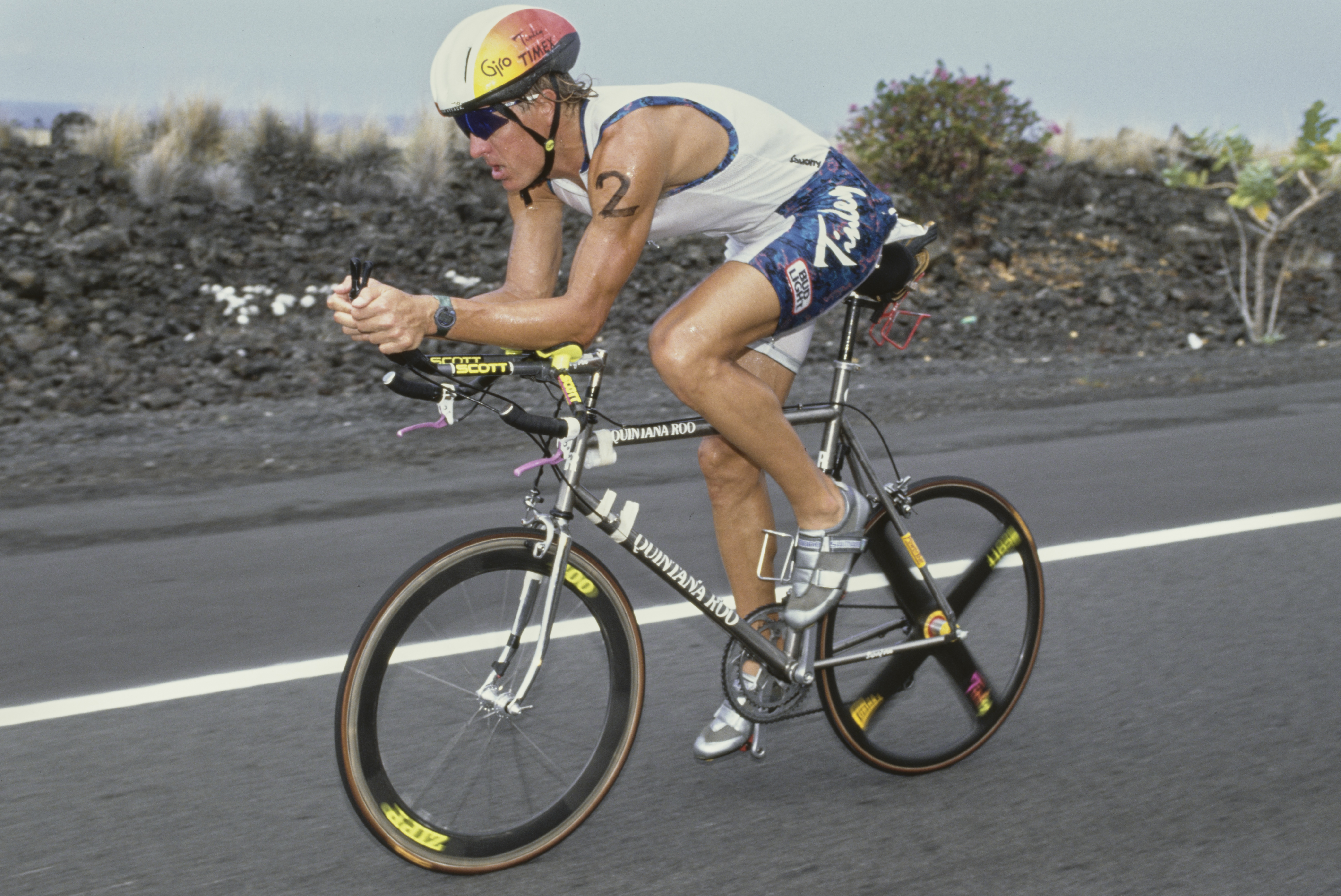
In 1985, legendary two-time Ironman champion (’82 and ’85) Scott Tinley bolted aerobars to his bike and wore covers on his cycle shoes for the first time, winning the event in sub-nine hours. Prior to this, competitors had used standard ‘drop’ handlebars.
36. Newbie breaks run course record
In 2016, on his debut, Patrick Lange raced into the Kona history books by breaking Mark Allen’s run course record with a 2:39:45 split. Lying 23rd in T2 his phenomenal run led him to finish third, behind Sebastian Kienle and Frodeno, ensuring a clean sweep for Germany.
In 2017 he went onto win the race, and smash the course record with a time of 8:01:40. A feat he repeated a year later, but this time he went sub-8hrs with a time of 7:52:39.
Incredibly, six years later, he was back at it – see No.6.
35. Amputee Jim MacLaren finishes the Ironman
In 1985, the former Yale footballer Jim MacLaren lost his leg. Not deterred, he then set about training for Hawaii, completing the event in 1989.
Sadly, four years later he was hit by a van at the Orange County Performing Arts Centre Triathlon and became a quadriplegic. He returned to the stage of the Ironman to emotional scenes, and now lives by the saying: “Behind every tragedy there’s something to learn.”
34. Valerie Silk sells Ironman
In 1990, Ironman owner Valerie Silk sold the event for $3million to Dr Jim Gill, a Florida ophthalmologist and Ironman competitor. Gill subsequently founded the World Triathlon Corporation (WTC). The Pit and the Natural Energy Lab sections were added to the course the same year.
33. NBC takes over the Ironman coverage
In 1991, American broadcaster NBC televised the Ironman for the first time. In the same year, Gatorade signed on as the title sponsor. The two become synonymous with the race in years to come.
32. Youngest-ever winner takes first men’s title in Nice

The decision to split the Ironman Worlds over two destinations in 2023 was met with a mixed response. Regardless, it went ahead with the women in Kona for the first year and the men heading to the Cote d’Azur, to tackle Nice’s epic course.
Rocking up was France’s Sam Laidlow, who’d made his impressive debut at the lightening-fast 2022 Ironman Worlds (see No.7), finishing runner-up to Gustav Iden and being one of four men to break the then course record. He would also set a new bike course record of 4:04:36, which he would then break again in 2024 in Kona with a 3:57:22.
2023 was his year, though, as the then 24-year-old put on a swim, bike and run masterclass, clocking a 47:50, a 4:31:28 and a 2:41:46 marathon to take his first title.
31. Sarah Reinertsen is the first female amputee to finish
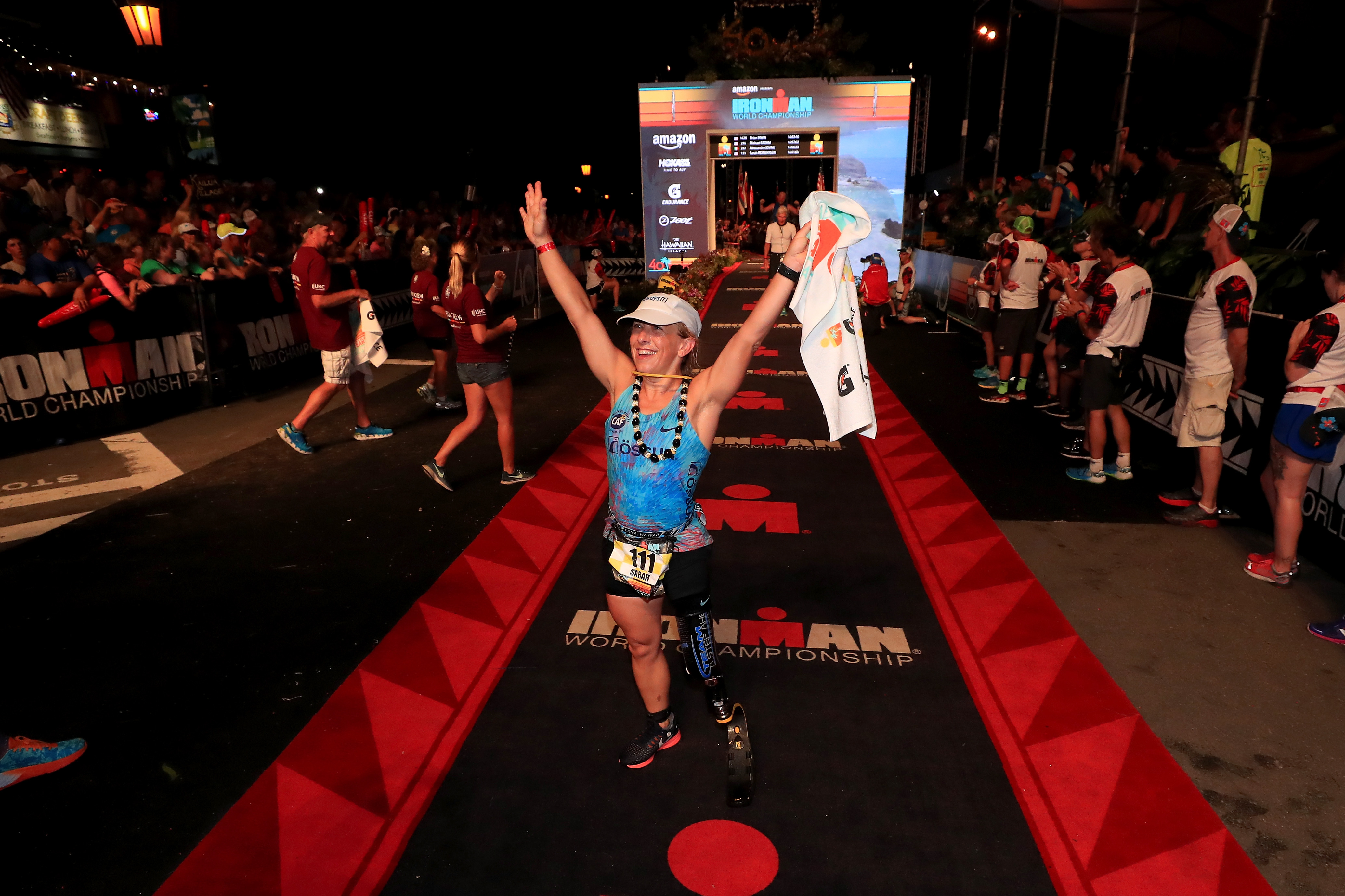
In 2004 Sarah Reinertsen tried to compete the Ironman but failed, missing the bike qualifying time by 15 minutes. In 2005 she was back, becoming the first female above-the-knee amputee to complete the course. At the finish line, a self-effacing Reinertsen proclaimed, “Damn, I did it.”
30. Giant of gridiron and Kona
1995 saw American footballer Darryl Haley, above, of the New England Patriots, become the largest person to complete the Ironman at 6ft 5in and weighing almost 300lbs. It was estimated that Haley burned 17,000 calories during the event.
29. Sister Madonna Buder makes it second time lucky
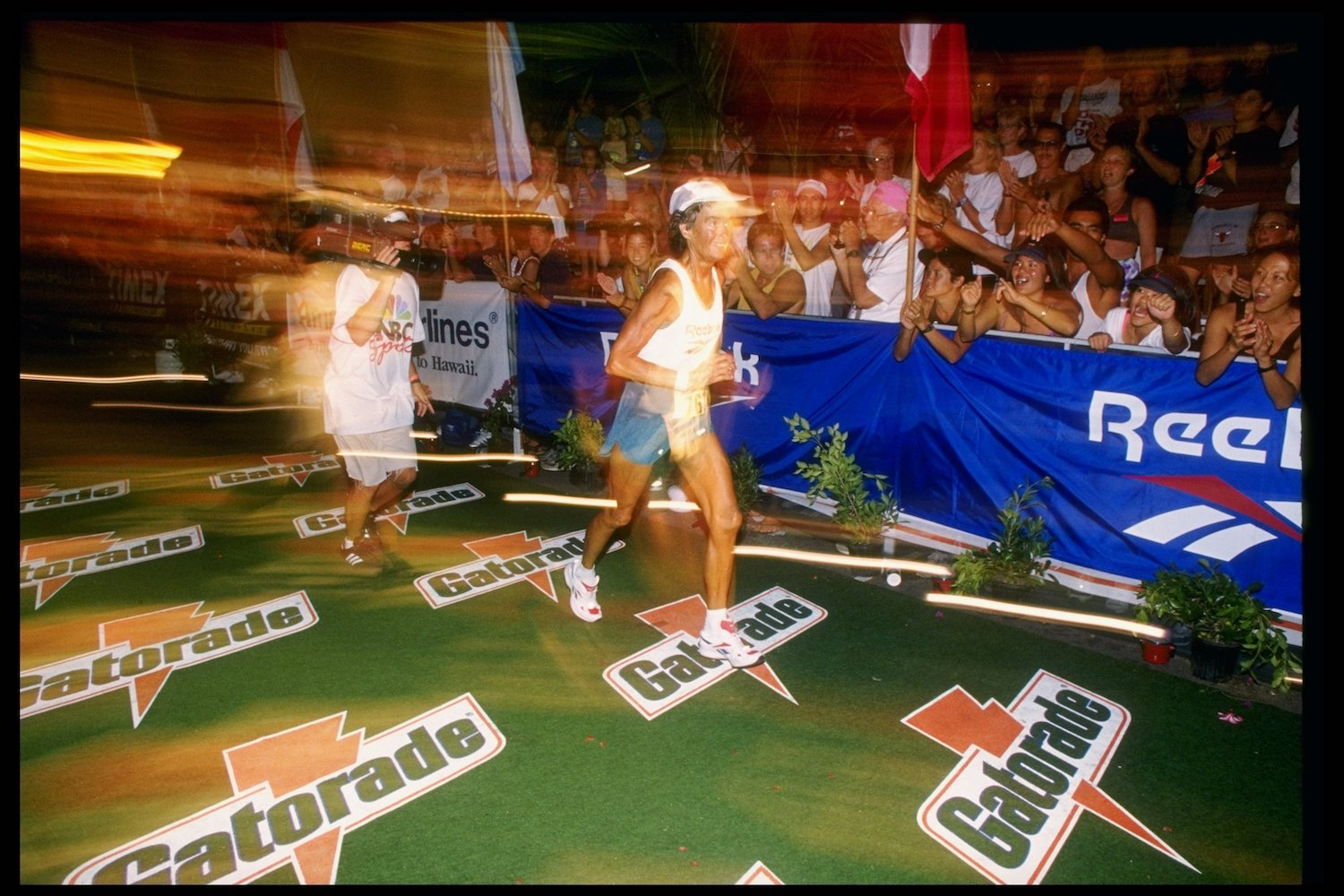
Having been a marathon competitor before she took up triathlon, Sister Madonna Buder of the Sisters for Christian Community amazed onlookers by being the first nun ever to enter the race.
Though she failed in her first attempt (1985) to reach the cut-off times, she’s taken to the start line most years since, racing to cheers of “Go sister!” And the reason she competes: “It is with your (God’s) power that I am able to do this. So if this is your will, then keep me going.”
28. Dave Scott places second, aged 40
It may have been Aussie athlete Greg Welch’s day, but many eyes were on Ironman icon Dave Scott, who came out of retirement to take second place in 1994. Scott stopped the clock at an amazing 8:24:32, only four minutes shy of Welch.
27. Blazeman defies the odds
Jon Blais, who became known as Blazeman, was diagnosed with Lou Gehrig’s disease in the winter of 2004, which damages the motor neurons in the brain. Despite losing the use of his fingers, he still managed to complete the 2005 race in a time of 16:28:56.
26. GB’s Kat Matthews races into the runner-up spot
In her first Ironman Worlds’ outing at the 2021 postponed champs in St. George, USA, Kat Matthews plays sandwich filling to five-time champ Daniela Ryf and 2019 winner Anne Haug.
Having only turned pro in 2019, the then 31-year-old’s performance was the fourth time in succession a British triathlete has finished runner-up in the women’s race (see No.23).
But it continued to be a theme – GB’s Lucy Charles-Barclay finished second, again, at the 2022 Worlds in Kona; for once it was a German in second spot in 2023 (Haug behind Charles-Barclay); and then it was Kat’s turn again in 2024 behind Laura Philipp in Nice.
25. Paula Newby-Fraser sets a new women’s course record
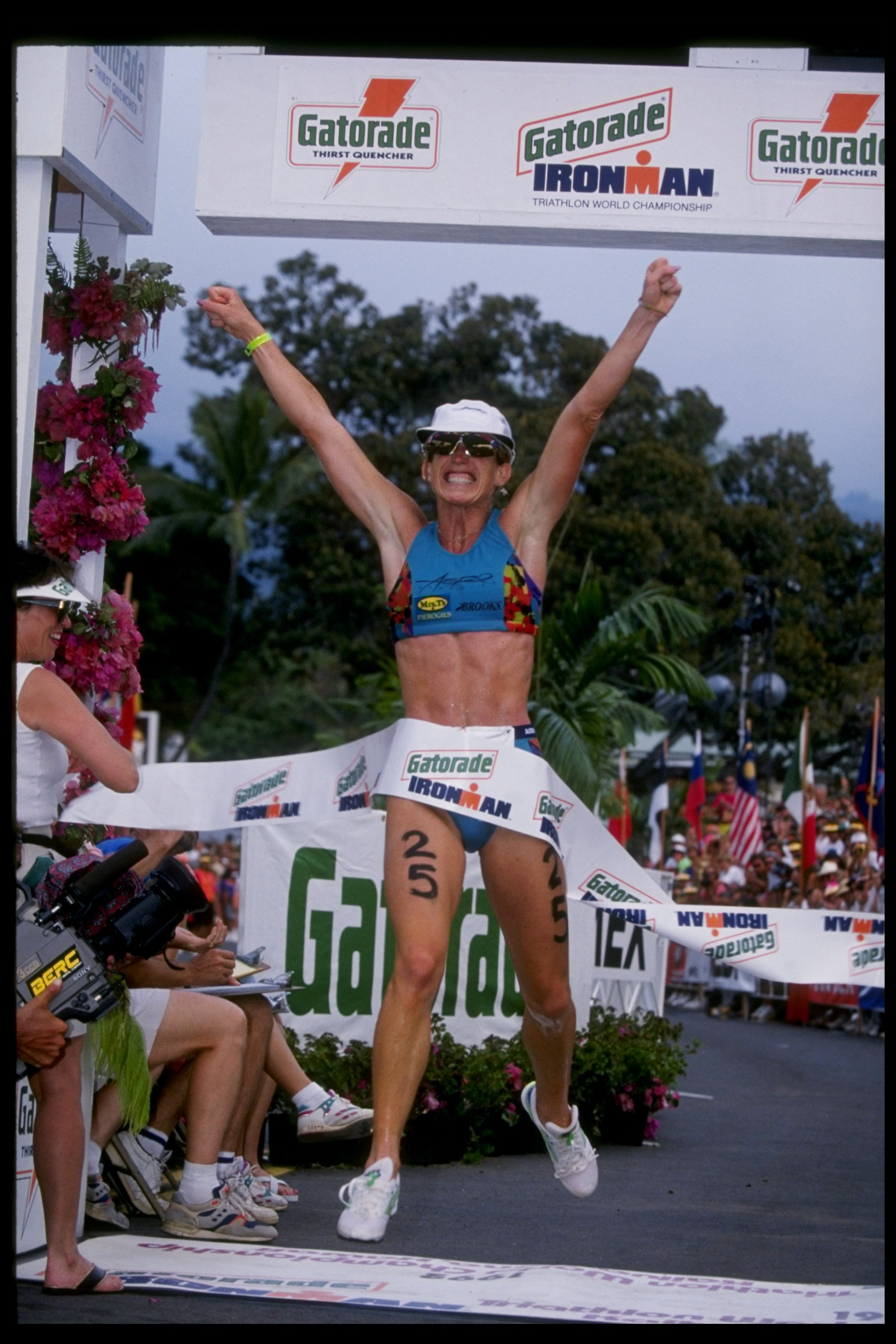
In 1992 Paula Newby-Fraser hit the sweetest point of her career during her fifth Kona victory, obliterating the women’s nine-hour barrier to stop the clock at 8:55:28.
We placed Newby-Fraser second in our top female triathletes of all time list – do you agree?
24. Dave Scott wins his sixth title
A strict vegetarian throughout his Hawaii winning streak, Scott was the first male to dominate the event. He won his first title in 1980 and his last in 1987. He claimed three consecutive titles from 1982 to 1984, and again in 1986. His personal best was 8:10:13.
23. Lucy Charles-Barclay finishes second… four times!
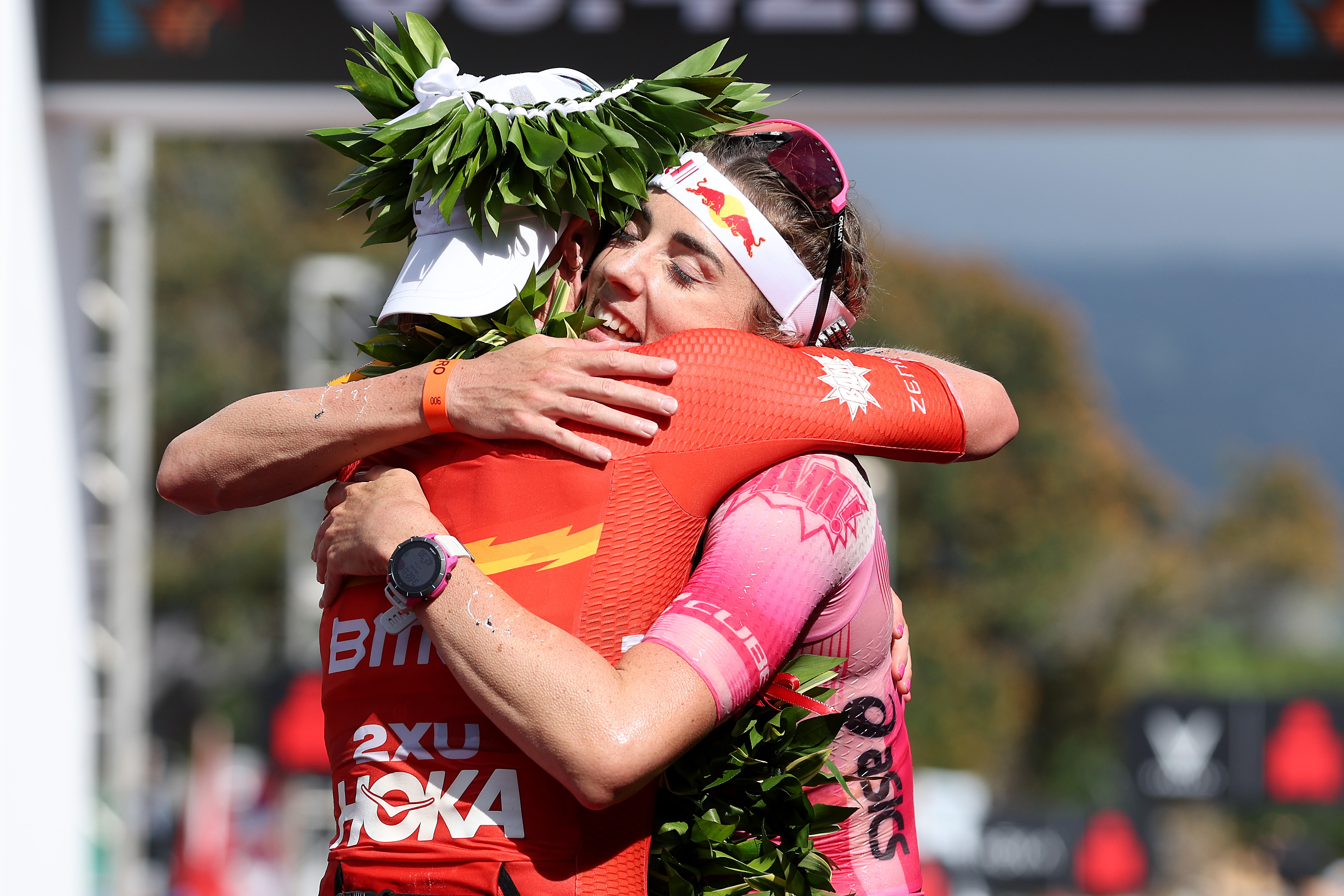
Always the bridesmaid… but what a bridesmaid! GB pro Charles-Barclay has been runner-up four times on the trot in Hawaii, from 2017-2022 (no race in Hawaii in 2020 and 2021), but is always the first out of the water and holds the current swim course record of 48:14 (set in 2018).
22. Chrissie Wellington becomes the first UK athlete to win
Nicknamed ‘Muppet’, Wellington pulled all the right strings in 2007 title, having only turned professional that year. What makes this all the more impressive is that she won the event on debut, having raced only one Ironman previous… which she also won.
21. Karen Smyers wins two world championships
In 1995, American Karen Smyers did the seemingly impossible by winning both the Ironman World Championship in Hawaii and the ITU World Championship (Olympic distance) in Cancun, Mexico, in the same year. A feat yet to be repeated by any female triathlete.
20. Greg Welch becomes the first non-American male winner
Nicknamed ‘Plucky’ for his resilience, Australian Greg Welch’s 1994 victory broke the USA’s 17-year domination of the event, as he became the first man to win the Grand Slam of triathlon, winning world championships in Ironman, Olympic-distance, duathlon and long-course events.
19. Mum Chelsea Sodaro wins the 2022 title on debut
In her first Ironman Worlds, Chelsea Sodaro became the first American-born woman to win the title for 27 years. The then 33-year-old Team BMC triathlete from Nevada – who’d given birth to daughter Skye 18 months prior – was also the first triathlete to win on debut since Chrissie Wellington in 2007 and only the second mother, after Switzerland’s Natascha Badmann, to win the coveted title on the Big Island.
Sodaro’s finish time of 8:33:46 was the second-fastest winning time in Kona, while her 2:51:45 marathon was just a minute outside Mirinda Carfrae’s then run course record (Anne Haug broke it in 2023 with a 2:48:23).
18. Billy Monger smashes double-amputee record

Racing driver, commentator and 220 cover star Billy Monger took on the 2024 Ironman World Championship as part of a Comic Relief Challenge for charity.
In an exclusive interview for 220, Billy revealed pre-race: “The first goal is to finish in under the 17hr limit. Next is to break the existing record for a double amputee of 16:25hrs. Beyond that, sub-15hrs has a nice ring to it, but the team isn’t getting carried away.”
Billy’s time? An incredible 14:23:56. He also came first in the PC/ID (Physically Challenged/Intellectual Disability) category and crossed the line 1,003 overall.
17. Chrissie’s fourth and greatest
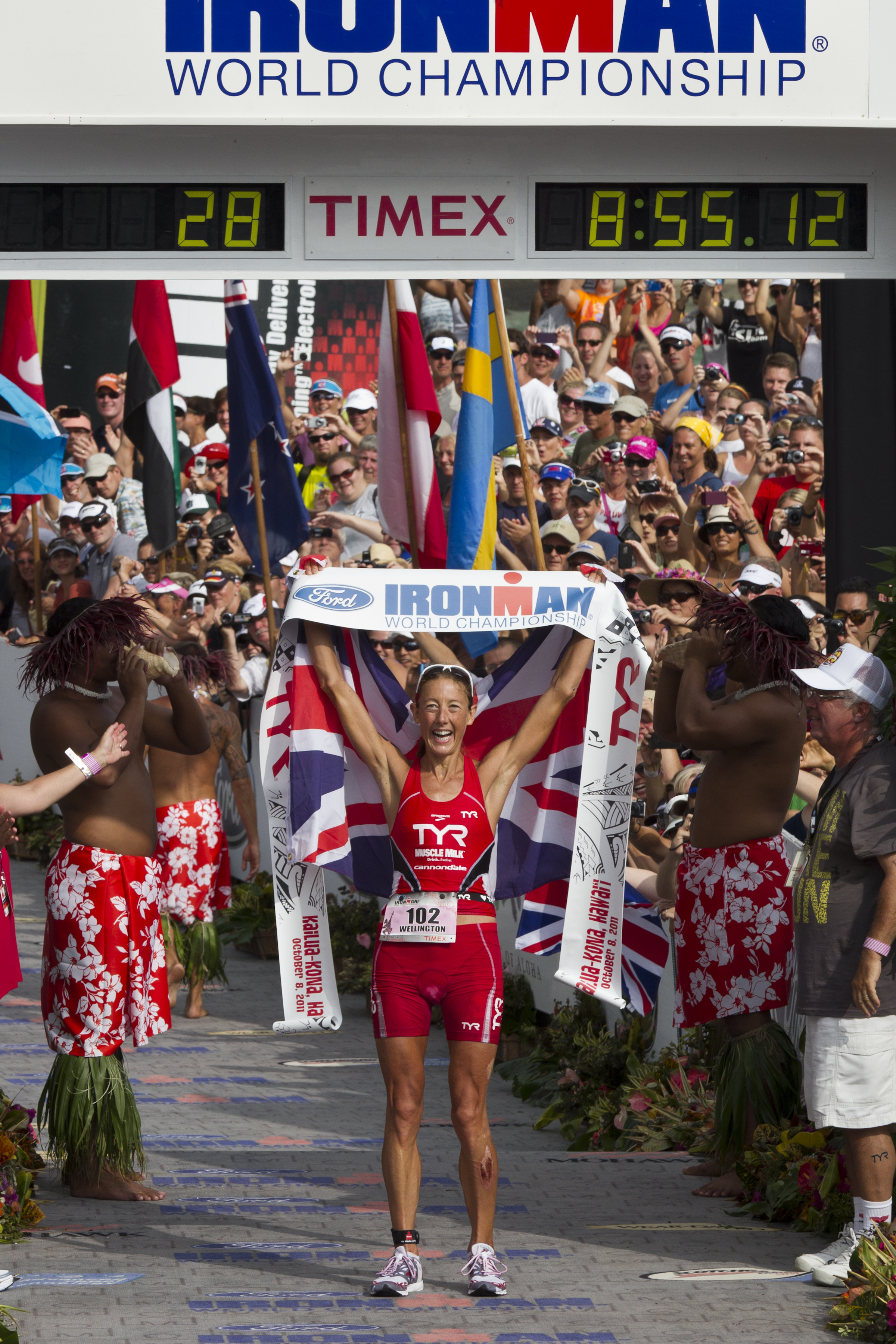
Ten days before the 2011 Championship a bike crash in training had seen Chrissie’s leg swell to double its size. Five days before, Welly had to be pulled out of the water because her pec muscle was so sore. Cut to T1 and Chrissie was nearly 10mins behind the leaders. T2 and she was still 22mins down on Julie Dibens and 10mins on Caroline Steffen.
After three dominant Kona victories, here was Chrissie pushed to the limit. After passing the Brit trio of Dibens, Rachel Joyce and Leanda Cave by the halfway point in a phenomenal 1:22hr split, Steffen was next in Chrissie’s crosshair but Miranda Carfrae was pushing from behind.
A 2:52hr marathon sealed the win, her fourth, final and greatest Hawaii victory. Waiting at the finish-line was an IV and some chicken nuggets and chips.
16. Natascha Badmann makes it six for Switzerland
The first European woman to win the event, Badmann went on to record her sixth win in 2005. Starting in 1998 the Swiss then went on to win three consecutive titles from 2000 to 2002, and again in 2004.
Known for smiling her way through races, Badmann is a true Ironman great and we name her our third top female triathlete of all time.
15. Finally the bride! LC-B wins the title

On her fifth attempt, everything comes together for the four-time runner-up Charles-Barclay at the first women-only Ironman World Champs in Kona (the men would race in Nice), in 2023.
Leading from gun to tape it’s a performance for the ages, holding off a charging Anne Haug to set a new course record of 8:24:31 and claim the world title.
14. Frodeno becomes first Olympic champion to win in Hawaii
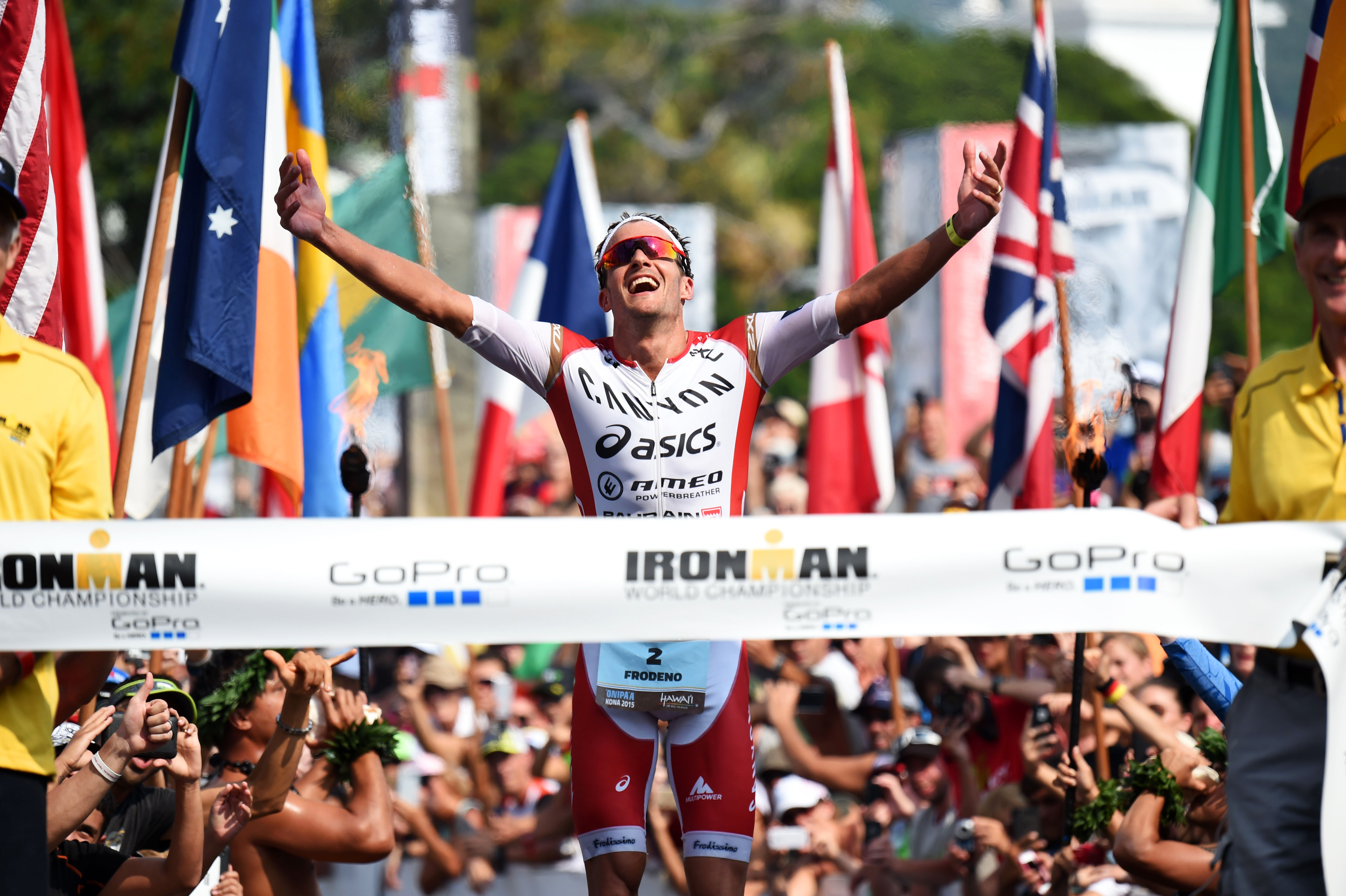
In 2015, German triathlete Jan Frodeno, who’d already won the Ironman European title in Frankfurt in July and the World 70.3 crown in August, confirmed his status as the best long-distance triathlete in the world by winning the Ironman World Championship in a time of 8:14:40, 3:03mins ahead of Andreas Raelert, with Tim O’Donnell in third.
“Thank you all for your amazing support,” said the 2008 Beijing Olympic champion at the finish. “I’m sorry to take the title from an American again, but I’m glad TO [O’Donnell] didn’t have any garlic last night as he was breathing down my neck all day. I’m over the moon, what a race.”
Unbeatable Frodeno won again in 2016 and 2019 (see No.11).
13. Ryf breaks women’s course record
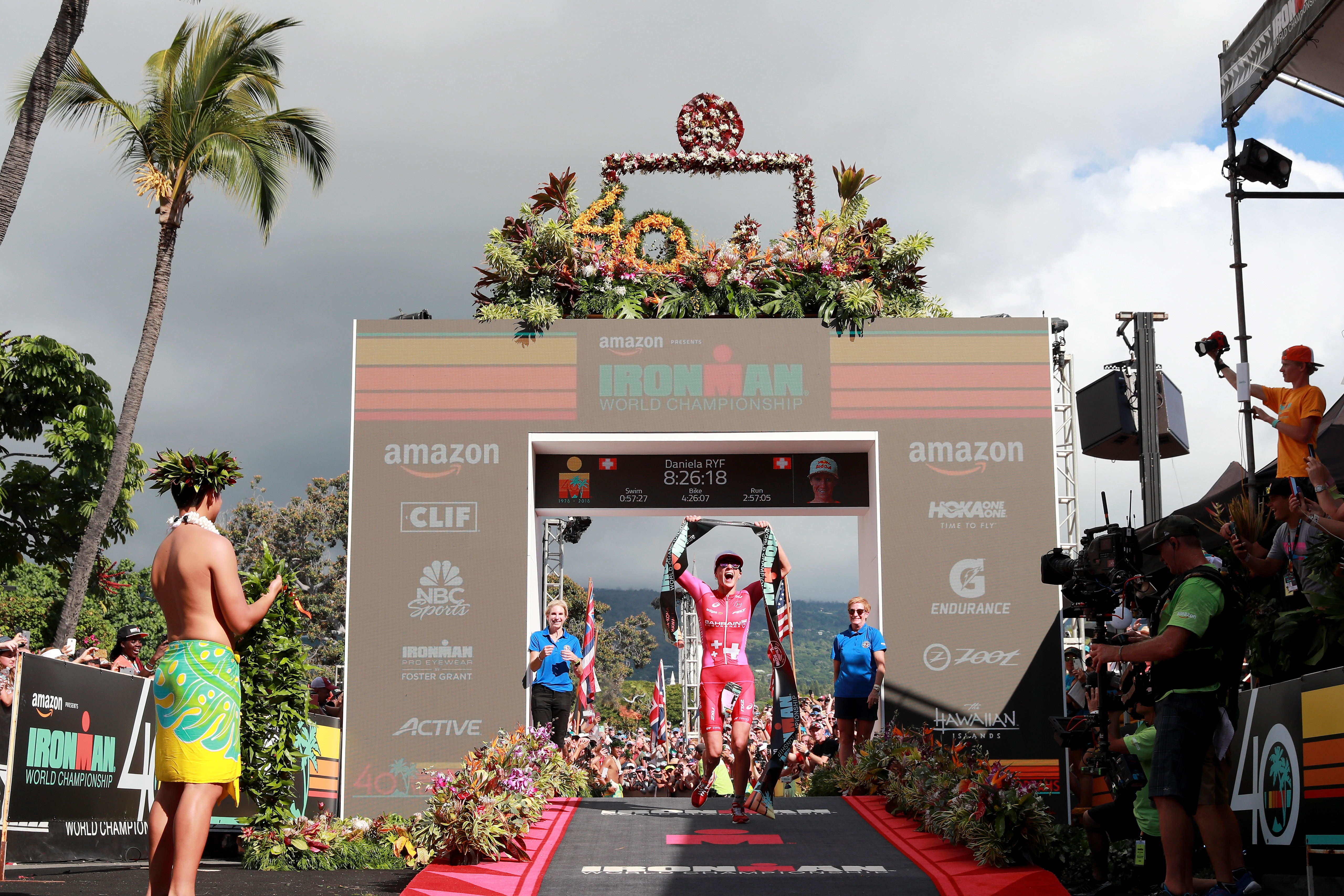
In 2016 Daniela Ryf set a new course record at the Ironman World Championship with a time of 8:46:46, and was 23 minutes ahead of her nearest rival Mirinda Carfrae.
She then went on to win in 2017 and 2018 making it four in a row, equalising Chrissie’s record. But it didn’t end there as in 2018 she also smashed the course record again, breaking her own record by 20mins, to clock a 8:26:18. She still holds the women’s bike course record with a 4:26:07, also clocked in 2018.
12. John Maclean becomes the first wheelchair athlete to finish
Australian John Maclean was hit by a truck while bike training in 1988. Undeterred, he became the first wheelchair athlete to tame the ‘Big One’ in 1995. While wheeling himself backwards up one hill, best friend Johnno Young famously said to him: “The pain won’t last forever, but the memories will.”
11. Jan Frodeno takes his third title

In 2019, the men’s Ironman world title went to Germany for the sixth year running thanks to an extraordinary feat of human endurance from Jan Frodeno.
In his third title-winning race, the 2008 Olympic champion also broke the previous year’s course record (see No.36) with a time of 7:51:13.
Injury and the pandemic put paid to a title defence, and he eventually called time on his illustrious career at the 2023 Ironman World Champs in Nice, where he finished 24th.
10. Dick and Rick Hoyt
Father-and-son pair Dick and Rick Hoyt memorably finished the 1989 Ironman together. What made their feat so special was that Dick towed his handicapped son in a boat in the swim, propelled him on a specially made bike and pushed him in a wheelchair for the run. A collective outpouring of emotion greeted them both at the finish line.
9. The quintet queen
By winning her fifth Ironman world title at the postponed 2021 Ironman Worlds in May 2022, Daniela Ryf joins an elite club whose only members are her compatriot Natascha Badmann and the Zimbabwean Paula Newby-Fraser.
8. Kristian Blummenfelt wows the long-distance world
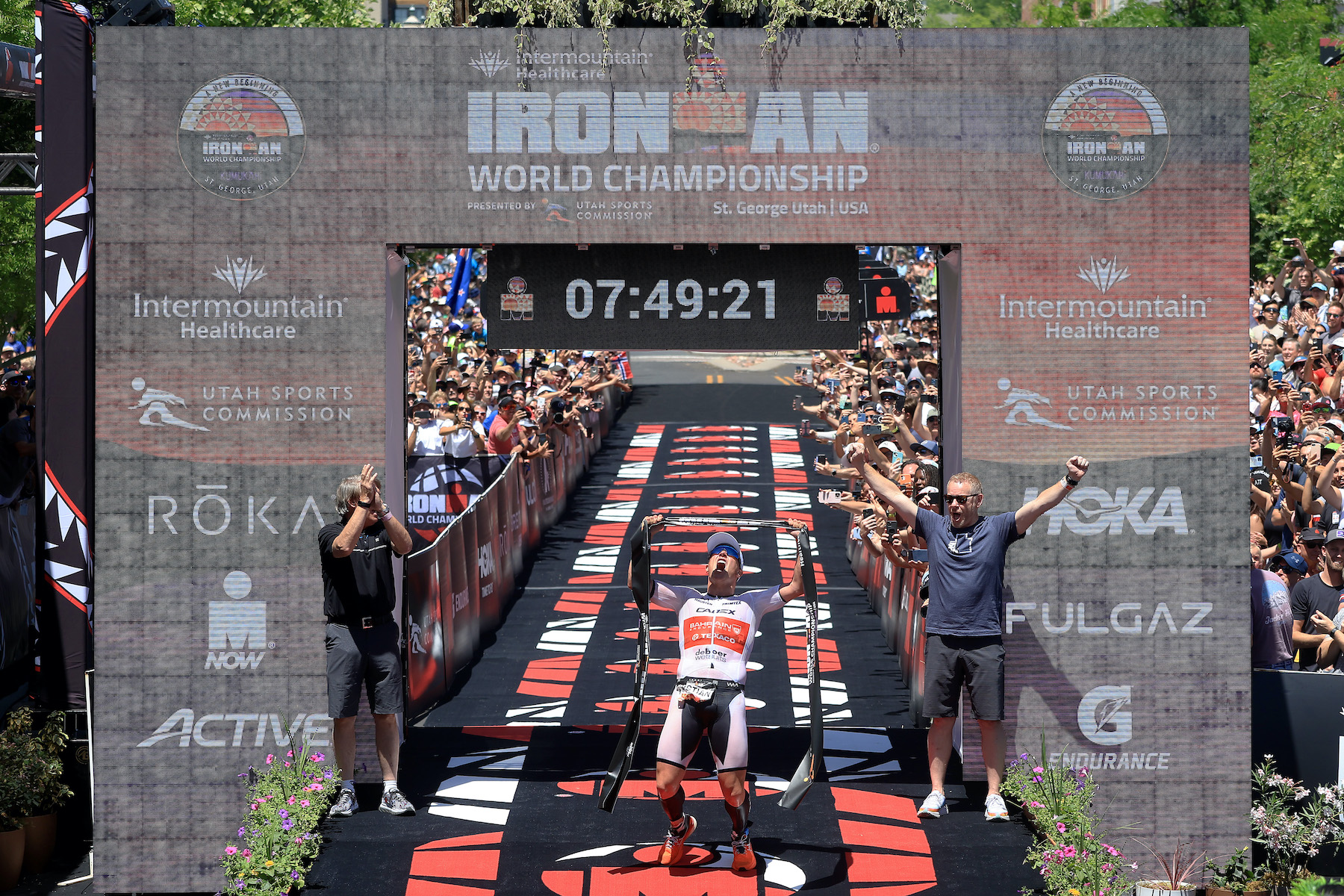
The Norwegian’s dominance across all distances reached a pinnacle on 7 May 2022 at the postponed 2021 Ironman Worlds (held in St. George, Utah, USA). Crossing the line first, he became the first triathlete to hold both the Olympic and Ironman world titles simultaneously, and the first to win on debut since Belgium’s Luc van Lierde in 1996.
Although not held in Kona, Blummenfelt’s winning time of 7:49:16 (including a 2:38:01 Ironman Worlds’ run record) broke Frodeno’s Ironman Worlds’ record from 2019.
It was also only his second full-distance event, having clocked an Ironman world-best 7:21:11 in Cozumel in November.
7. The year of the Rocket Men
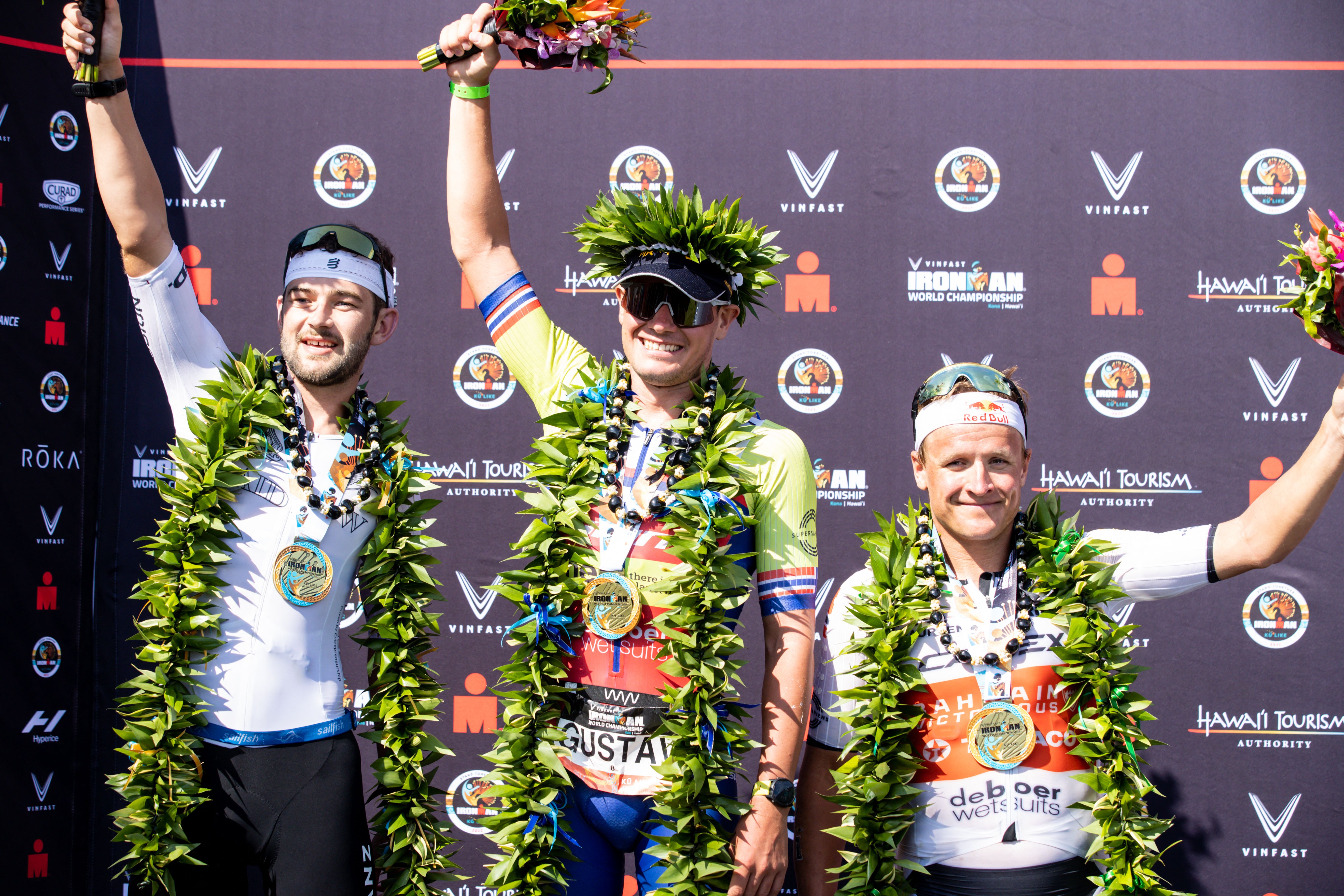
As the reigning champion and, for many, already one of the greatest athletes of his generation, Blummenfelt strode into Kona for the 2022 Champs (and the first Worlds in Hawaii since 2019) with a huge target on his back. But he was gracious enough to admit pre-race that either he or fellow Norwegian Gustav Iden would take the honours.
As it transpired, Blummenfelt would break the course record with a 7:43:23… but then so did Iden who clocked a whopping 7:40:24 to win his first full title. Iden also smashed the run course record with a 2:36:15 marathon.
Rookie Sam Laidlow then clocked a 7:42:24 (including a new bike course record of 4:04:36) to finish second. If that wasn’t enough record-book ripping, Aussie Max Neumann also smashed the previous Kona target time of 7:51:13 (see No.11) with a 7:44:44 to finish fourth.
6. Lange three-peats, six years after his last win
Back in the Worlds’ birthplace, the 2024 men-only competition is wide open with several possible contenders for the title. But Germany’s Patrick Lange, who last won in 2018, proves unstoppable as he crosses the line for this third world title and a new course record time of 7:35:53.
The times just keep falling as seven men go under the previous bike course record of 4:04:36 and 16 men break the 8hr mark.
The Iron War? Julie Moss’ crawl? Or Paula Newby-Fraser winning her eighth? We reveal our top five Ironman Hawaii moments…
5. Mark Allen matches Scott’s feat
Nicknamed ‘The Grip’, Allen won five consecutive victories from 1989 to 1993. He didn’t start in 1994, which had Greg Welch thanking his lucky stars, but in 1995 the returning Allen wouldn’t be denied, equalling Dave Scott’s record of six titles. That was enough for Allen, who never raced at the Big Island again.
We named Mark Allen the greatest male triathlete of all time – do you agree?
4. The ‘crawl off’

In the 1997 Ironman, Sian Welch, wife of Greg, started to stumble going down Ali’i Drive with only minutes to the finish. Around the final bend she turned to see Wendy Ingraham close behind. Ingraham was in a similar depleted physical state. As they hit the finish-chute carpet in their race for fourth, they both fell.
Trying to stand and run to the line only feet away, they both collapsed again. Eventually, Ingraham discovered that crawling to the line on all fours was the best option.
Welch followed, but couldn’t catch up. The ‘crawl’, as it has become known, is one of the most talked-about finish line dramas in the event’s history, and led the American commentator to remark: “Their bodies were obliterated but their spirit stayed firm.”
3. Paula Newby-Fraser wins her eighth Ironman title
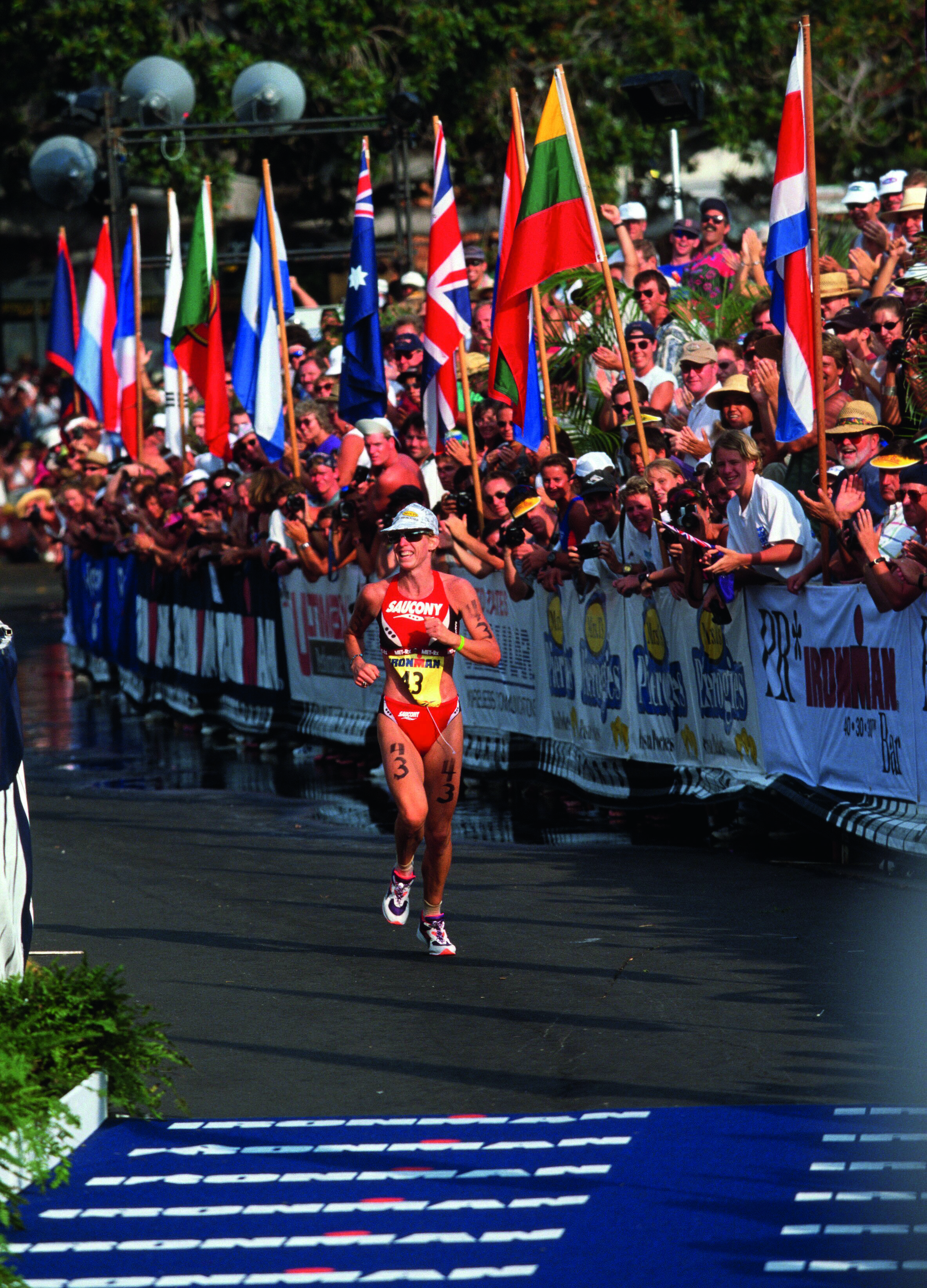
Nicknamed ‘The Queen of Kona’, Paula Newby-Fraser became the most successful athlete in Hawaii with her record eighth Ironman victory. The Zimbabwean started with a win in 1986 and won her last in 1996.
During this time she would only be beaten by Karen Smyers and Erin Baker. For this achievement, the United States Sports Academy named her in the top five female professional athletes of the last 25 years.
2. Julie Moss crawls to the line

Mark Allen could do nothing but watch on the television as his future wife crawled to the line in an heroic achievement that set the level of drama for the Ironman to follow in years to come.
Allen was so inspired by Moss’ display that he decided to venture to the island to start his own Ironman quest. Moss’ 1982 wobbly stumble through Kailua-Kona to the finish line was a boon for the sport, strangely attracting people instead of repelling them.
Moss’ reason for competing in the race was to gather data for her exercise physiology thesis as a US college student. As the 23-year-old drew closer to the finish, while leading the race fatigue began to overwhelm her exhausted body.
She continually dropped to the ground but recovered enough to press on, pushing away the hands of helpers in the process. With only feet to go, Kathleen McCartney shot past Moss and claimed the title. All Moss could do was crawl.
Though she didn’t end victorious, Moss’ courage fuelled the Ironman’s ascent to the lofty place that it now holds in modern sport. And just think, without her ‘crawl’, there may never have been an Iron War…
1. The Iron War is won
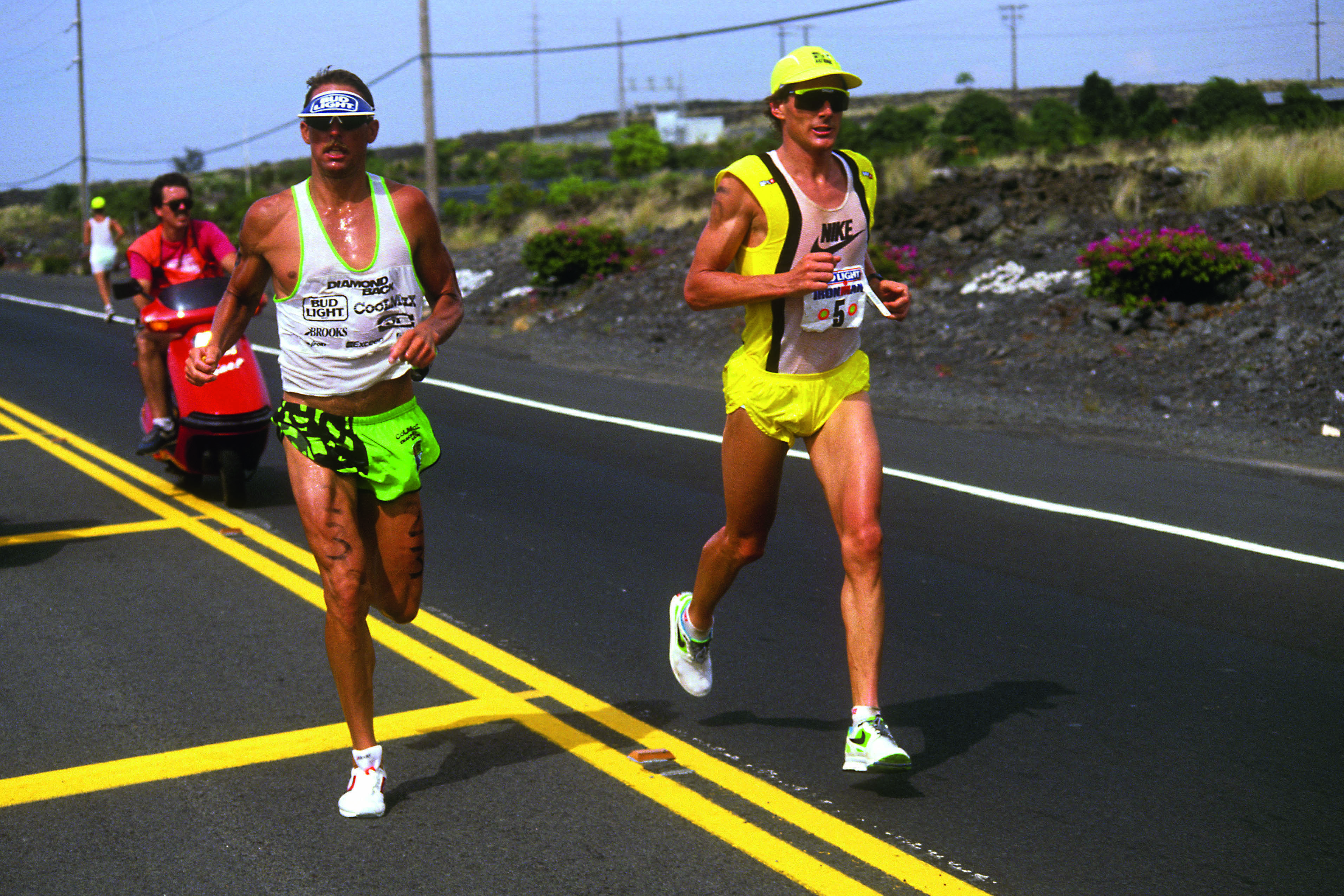
Mark Allen and Dave Scott first introduced themselves on the bike course 35 miles into the 1982 Ironman. Dave Scott won the race. Year after year, Allen came back to the lava fields to try and trump Scott.
In 1989, the two Hawaiian Ironman immortals swam and rode together the entire day. Then they ran shoulder to shoulder on the marathon course. At 21 miles, Scott started to succumb to Allen’s metronomic pace. At 23 miles, he was being tailed off as Allen made his move for home.
With an American flag in hand, Allen crossed the line for his first Hawaii win in the astounding time of 8:09:15. Scott, who in coming second posted his Hawaii PB of 8:10:13, had already won the race six times. Allen, with his first victory in hand, would go on to match his record. Scott described it as: “The perfect day for competition.”
We caught up with Dave to talk about that ‘day’ in 1989… “Would you believe, Mark and I didn’t talk about that race until 1996… When we started the run, I couldn’t get my legs going. Mark later commented that my pace was constantly going up and down, but I felt more like a metronome. It must have just been the undulations in the course.
“My plan was to break him at the top of Palani Hill; Mark had other ideas and stretched it out at the bottom. In my head I said I’m going to do that to you when I get to the top… but I didn’t. I couldn’t.
“After the race I was very hard on myself; when I crossed that line it felt like a sword had pierced my heart. But soon after, I realised I couldn’t have gone any harder. And credit to Mark, it was his tactics that beat me.
“You see, from early in the run, we’d run side by side, but at the feed stations Mark would be aggressive in getting to the front. At the time I just thought, ‘Well, I’ll drop back’.
“So for the next 22 aid stations I’d had to drop back 15 metres to make sure that I got my aid (the volunteers would be looking at the lead guy so you had to hold back a touch or potentially miss your drink). It meant I had to surge back every time, which left the tank emptier than it should have been.
“Fair play, it wasn’t malicious – just an athletic move, a competitive move.”





